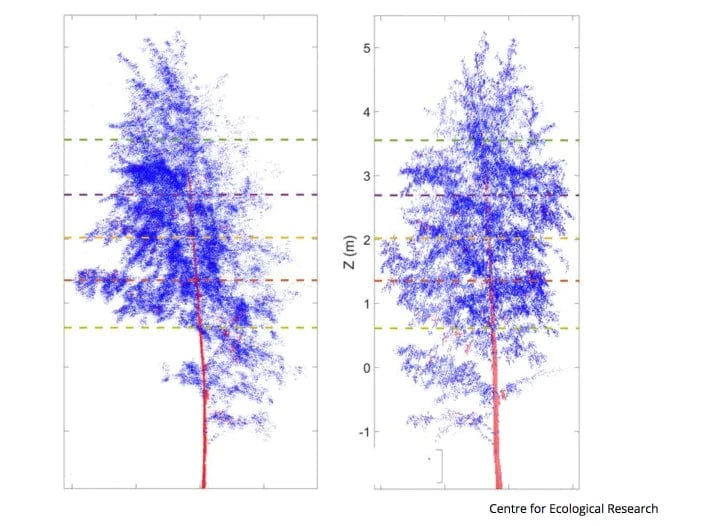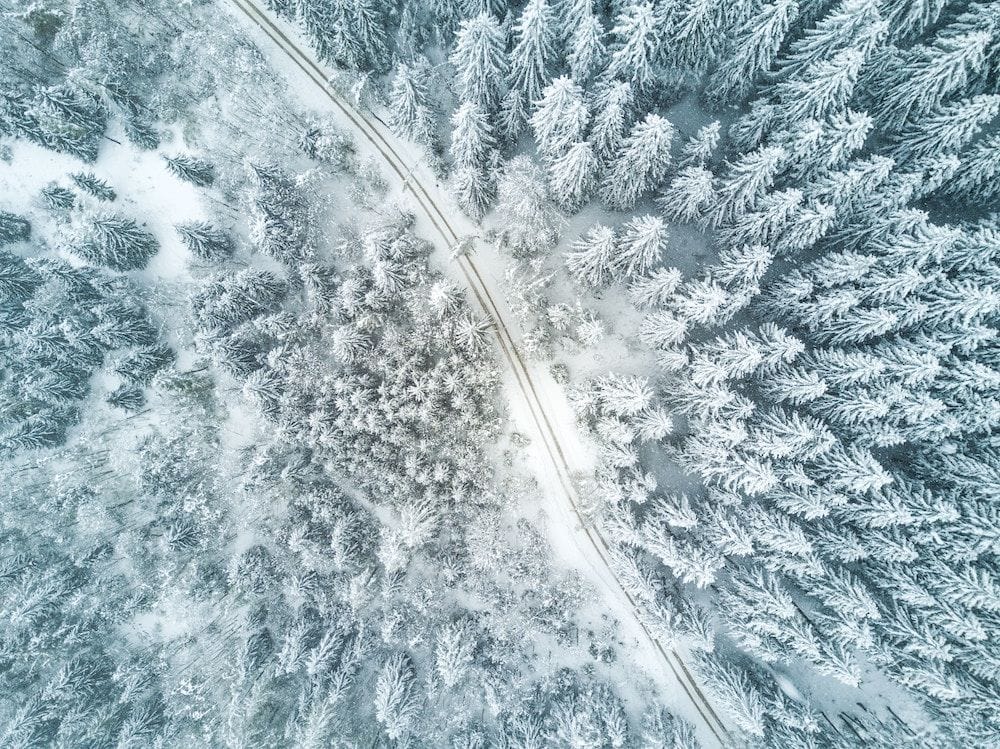
Get news, updates, & event Info delivered right to your inbox:
Have you ever wondered what trees do at night? Do trees sleep when the sun goes down? According to research, while trees may not sleep in the same way animals do, they do relax their branches during nighttime, which suggests that yes, trees have activity-rest cycles. These cycles can also vary depending on the tree species.
A very motivated group of scientists (led by Eetu Puttonen) from Austria, Finland, and Hungary teamed up and spent some nights analyzing how trees behave during nighttime. They used infrared laser scanners throughout the night to track changes in the tree with non-invasive sub-centimeter resolution.
What they discovered is that, not only do birch trees droop their branches an average of 10 centimeters during the night, but that they also have a daily cycle with several different phases, just like human beings. Following this circadian rhythm, the branches usually returned to their original position within a few hours after the first light.

Plant movement is typically associated with water balance and pressure in individual cells, as well as the amount of available light. Internally, we also know that a tree redistributes starches and sugars as part of it's biomass production process. So it makes sense that a tree's posture would be different in the absence of light. But scientists are still unsure of whether it is the water balance, lack of sunlight, energy conservation, or another factor that triggers the tree to lower it's branches.
While the trees may not sleep in quite the same way we do, this study does provide a clear indication that trees definitely rest at night.

Do Trees Hibernate?
In addition to sleeping, trees also hibernate, or become dormant in the winter. If you live wherever winter happens you can just look outside your window right now to see dormant trees.
In autumn, trees repatriate chlorophyll and starch from the leaves, before releasing them to the ground. This ensures the trees are not wasting any unnecessary energy during the coldest months. The starch is converted to sugar, which will keep the tree alive while acting as an antifreeze agent. Afterward, a dehydration process begins to ensure that trees will not shiver all winter (fewer liquids = less freezing opportunities, which also helps the tree stay healthy by preventing rot).
Beyond the sleeping habits of trees, the amount of darkness or light in the forest has a big effect on the overall ecosystem. For example, light filtered through the forest canopy is the most variable physical factor in tropical forests, both in space and time. This means that the amount of light available at any given moment, and where it's shining, have an incredible effect on nearly everything in the forest!
Forest light spectra can directly affect photosynthesis, the actual form and structure of plants, visual communication between different lifeforms, and the effectiveness of plant-animal interactions. This means that there's a whole lot more to the connection between trees, darkness, and the forest.
Want to get more involved and help forests? Plant trees with us today!
Get news, updates, & event Info delivered right to your inbox:
Related Posts
9 Sustainable New Years Resolutions
18/12/2025 by Meaghan Weeden
Inspirational Quotes About Trees
16/12/2025 by Meaghan Weeden
The 9 Oldest, Tallest, and Biggest Trees in the World
11/12/2025 by One Tree Planted
Popular On One Tree Planted
Inspirational Quotes About Trees
16/12/2025 by Meaghan Weeden
The 9 Oldest, Tallest, and Biggest Trees in the World
11/12/2025 by One Tree Planted
What Causes Deforestation?
10/07/2025 by Meaghan Weeden
Fundraising Disclosures

Be Part of the
Restoration Movement
The Grove is more than just a monthly giving program: it's a vibrant community of individuals who are dedicated to reforestation and environmental restoration on a global scale.
As a member of The Grove, you affirm your commitment to restoring forests, nurturing biodiversity, and fostering positive global change.



